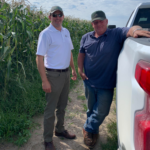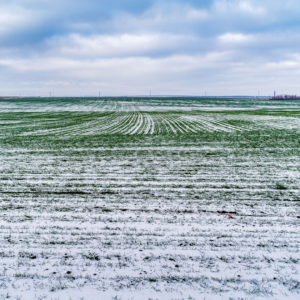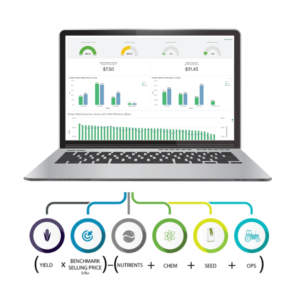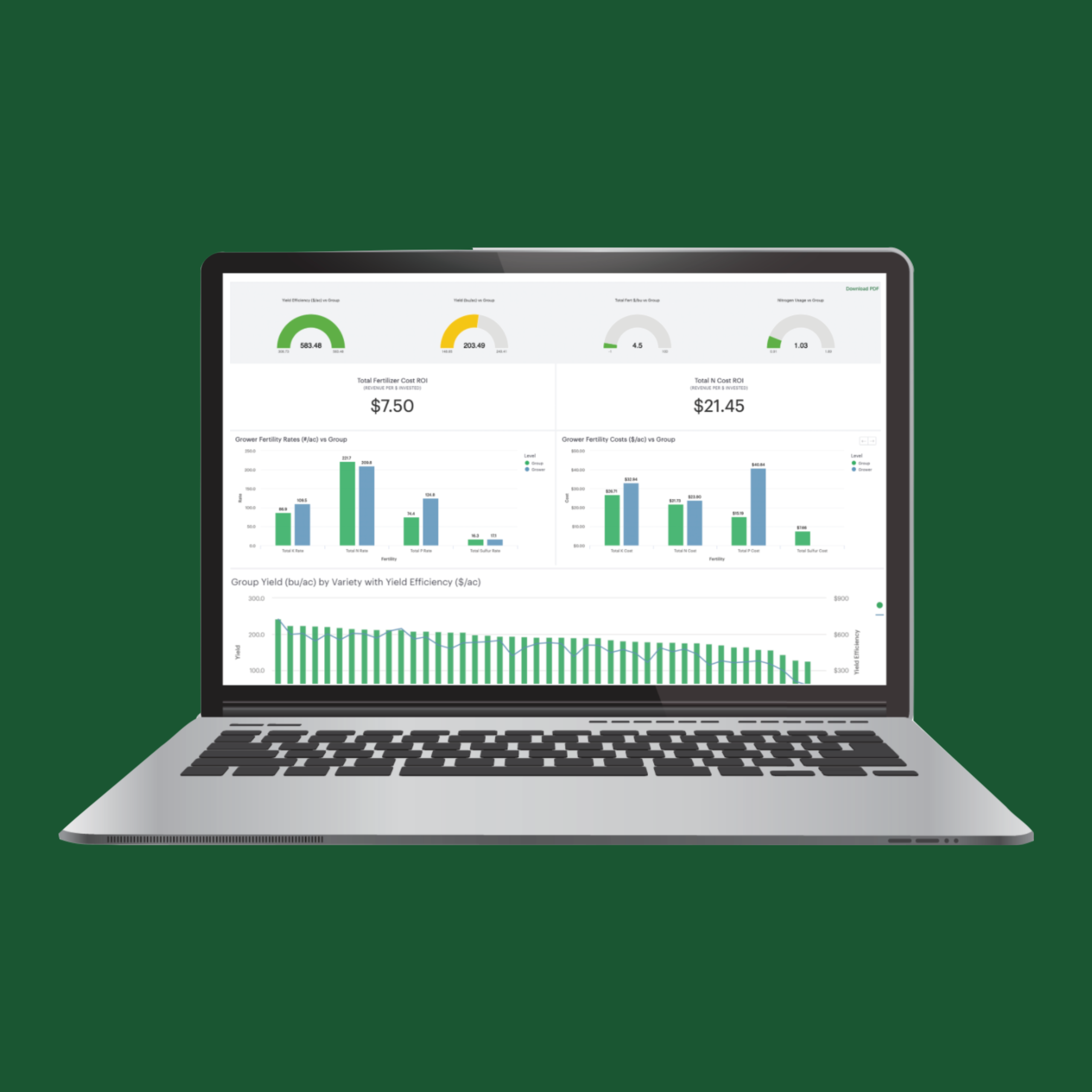
Today we are talking with Dan and Renee about the importance of Yield Efficiency in farming. Topics covered include yield efficiency, how this effects output, and related subjects.
About Dan: Founder and current VP of Technical Services. Since founding PCS in 1999, Dan has witnessed many changes and transitions in the ag data industry.
If you are enjoying the show, tweet us using #PremierPodcast.
RENEE HANSEN: All right. Welcome, Dan, to the Premier Podcast. Thank you for joining us today. Today, we’re going to focus on yield efficiency and have you explain to us how important yield efficiency is and why a farmer should be focusing on yield efficiency.
DAN FRIEBERG: In general, people have used yield as a measure of profitability, meaning that, as long as we achieve higher yields, that is our measuring stick for how good we are doing. Across the nation, we keep stair-stepping up, from a yield perspective. But, of course, we know that higher yields come at a cost. They come at a higher cost. What yield efficiency is for us is combining agronomics and economics. It’s just being willing to really put the dollars and cents from the grower’s perspective on the line. So, yield efficiency, the way we’re defining it, is the dollar-per-acre return to land and management. And the reason we exclude land and management is that we want to create a score that growers could anonymously benchmark against other growers in the area.
And when you include land cost, it really can be very distorting. Some people own their own ground, and they don’t necessarily charge themselves an opportunity cost on the land. Others are paying cash rent, and there are all kinds of different land arrangements. Plus, land cost is really personal and private. Taking land out of the equation from an economics perspective, when a grower sees a yield efficiency score, and it’s a dollar-per-acre return to land and management, they instantly are able to take their land cost out of that number and know how much is left for them. A lot of times, the return to management is profit. It’s family living. It’s what’s left over. So, yield efficiency is really, for us, about tying agronomics and economics together.
It’s perfect timing for the market because things are so tight at the farm gate. The economics are really tight. There’s a lot of operations that are struggling to break even, let alone make any money. It’s a great time to focus on not just better agronomics but better economics, as well.
RENEE HANSEN: Yeah, that’s such a great point, Dan, the fact you’re saying to focus on agronomics and economics. How is Premier Crop doing this different with our growers? How are we separating ourselves out from the marketplace? Because there are a lot of red waters out there and competition, so how does Premier Crop do this differently?
Managing on a Spatial Level
DAN FRIEBERG: Renee, it’s just about being real. We’re not just taking the statewide average cost of inputs divided by the yield file. What makes us different is we’re doing this spatially within the field. A lot of our go-to-market involves helping growers manage different parts of their fields differently. When we talk about yield efficiency, we’re talking about keeping track of all the input dollars as they change within the field. So, if you’re variable-rate applying part of your fertilizer, we’re tracking the cost associated with those variable-rate applications. If your variable-rate seeding, we’re tracking the difference in seed cost as you move across the field. With yield efficiency, maybe the best way to talk about it is it’s real.
This is a dollar-per-acre return that is tied to not somebody else’s costs but your actual costs. That’s probably the biggest, that there’s a fair amount of work involved to get there and to really have it be meaningful and right. There’s just a lot of shortcuts that people take. There are other solutions that do this at a field level, and we do that too. So, growers, they get a report card on every field, but what makes it even more unique is we drive it down within fields. It’s within-field measurement. I was doing a grower meeting last winter before COVID, and one of the growers saw me and said: “So, you can actually tell me if I got my management zones right.”
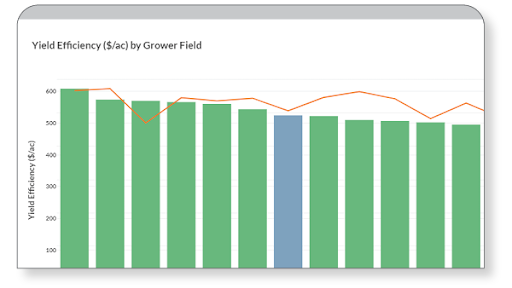
And I couldn’t figure out exactly what he meant, but then I finally figured out what he is talking about. What I was showing is we can actually measure yield efficiency down to a management zone. If we’re spending more on inputs in what we think are the best parts of the field, we can show the economic return to spending more. Renee, our company is 22 crop seasons into this. We’re getting ready to head into our 23rd crop season, and I’m convinced that the number-one reason that precision ag, as we talk about it and talk about all the things we do, the reason it’s not bigger is we haven’t consistently proven to the grower that it makes more money. That’s really the missing piece.
Every grower will respond to economics. If they can be assured that every year they will know that everything they are doing and being told to do agronomically actually pays, they would do it. It’s on us to step up our game and to be willing to measure our success, not just by yield but by dollars and cents. Are we able to drive higher returns in how we manage inputs? The big components of yield efficiency are yield times the selling price that the grower gets to set minus what they spent on seed, crop protection, nutrients and field operations. That’s how it’s all calculated, and it just generates a dollar-per-acre return.
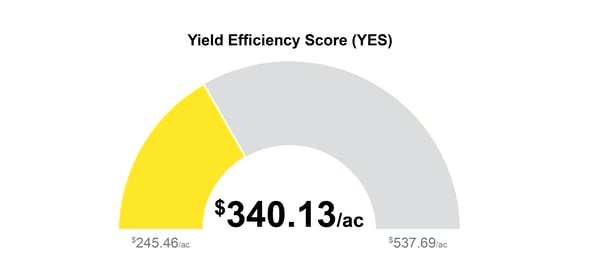
RENEE HANSEN: I’ve been out in the field too, Dan, and growers that have been using Premier Crop for multiple years, let’s say five to 10 years, continue to say that the service that is offered far outweighs the economics. And I think a lot of growers are afraid to jump in because they’re either not variable rate seeding or variable-rating nutrients yet because they haven’t seen the benefits. If they could understand what their yield efficiency can be by utilizing Premier Crop on a per-acre basis, not an average. And those growers continuously say, over and over again, that the money that they’re spending on the service far outweighs what they’re making back in returns.
DAN FRIEBERG: It’s being willing to measure whether what we did worked or not. There’s a lot of people who generate a prescription, but there’s no validation at the end of the day, whether that paid or not, and that’s the difference. Being able to validate whether using a prescription actually delivered more return to the grower, that’s really what this is all about.
RENEE HANSEN: Validating it, and they can compare against others in their region, Dan. So, can you share with us how we benchmark? They benchmark against themselves, but they also can benchmark against others in their region.
See Beyond Your Operation
DAN FRIEBERG: It’s the idea of benchmarking versus peers in your area. The ultimate benchmark is benchmarking in your own operation, so being able to have a handle, just knowing the most profitable parts of each field and how your fields compare to each other. That’s the first starting place. Every grower wants to see beyond their own operation. It just amazes me. They love to be able to compare in a system where quality data is really key. They love to be able to compare how they did and are doing compared to their peers. What you see with the yield efficiency score is, right away, what you see is sometimes the growers that had the highest yields that year didn’t have the highest yield efficiency.
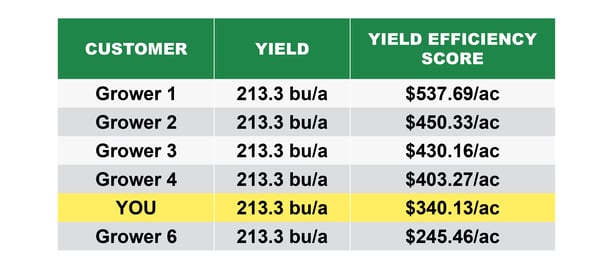
And it’s kind of that gut check. When you see that your yield is the highest but your yield efficiency isn’t, that’s kind of a wake up call. And it really creates dialogue, like: “What am I doing? What’s different? For people who are having a higher yield deficiency, what did they do differently?” And that’s really the details and that’s really what makes it fun, having those dialogues and figuring it out. But the first point of it is actually measuring. It’s actually knowing where you’re at. We’ve talked on an earlier podcast about: “You can’t manage what you don’t measure.” Or another way to say it is: “What gets measured gets focus.”
That’s where people focus. If you’re not measuring the dollar, if you’re not measuring everything you’re doing agronomically economically, then you’re not going to focus your attention on it. So, we just believe that it’s time, in this day and age with the technology we have available, it’s time that we deliver analytics to the grower that shows how we’re investing. The only way to drive yield efficiency is you have to figure out where, within every field, to invest and how much to invest in each part of the field. Sometimes, investing in nutrients in some parts of the field is literally a waste of money because that’s not what’s yield limiting. It’s something else.
RENEE HANSEN: And if you can save money in that part of the field, why wouldn’t you? You talked about how critical this market is. Why is it so critical right now? Why is it more critical now than it ever has been in the past to determine yield efficiency?
DAN FRIEBERG: It’s so hard to make money. It is really, really hard to make money. It’s just very difficult right now. It’s difficult, and things are just so tight. Commodity markets have really taken a tumble, and we’re just in a really tight time, so it’s really hard. Renee, in those 23 years, sometimes, I think we actually grow fastest as a company when things are the worst at the farm, when the economics are the worst. And I know that doesn’t make sense to some people, but when it’s so hard to make money, that’s when growers decide: “Okay, I’ve got to do something different. I’ve got to focus on managing in much more detail.” And that’s kind of what we do. We help them plan and, really, we help them spend every input dollar as wisely, within each field, as possible to try to drive higher returns.
RENEE HANSEN: There’s that saying of: “Spend money to make money.” What would you have to say about that and where we are right now?
DAN FRIEBERG: You do. Another way to say it is: “You can’t save your way into prosperity.” That’s really the magic. Sometimes, there are areas where you can save money, and those are really critical. Saving money in those areas makes a lot of sense, but there are other areas where you have to invest, that you have to invest more to make more.
Get Started with Yield Efficiency
RENEE HANSEN: And just be more efficient. And that’s what we’re talking about with yield efficiency. Dan, how does a grower start? How can they get started to determine their yield efficiency?
DAN FRIEBERG: What we do is we lead them through. We try to get accurate yield data, and then it’s about tracking the input cost. If they’re doing any kind of variable-rate activity, we’re looking for those files. We’re looking if they’ve done anything variable rate because we’re trying to track that difference in cost within the field. It’s like: “What did you apply and how much did you spend?” And if that’s variable-rate, that’s great. If it’s just straight-rate, then that’s fine too. That’s a way to get started. It takes yield. We’ve got to know yield and have to know the key input costs.
RENEE HANSEN: Yeah, and this is something that Premier Crop has been working on. You talk about how, when you started Premier Crop, that you were going to focus on costs, as well, but didn’t back then. And now we’re really bringing it back to that and merging the agronomics and economics. Can you talk about the direction where we’re going in the future?
DAN FRIEBERG: You’re exactly right. Premier Crop started with this, and we have customers who have done this for 20 years. We had a slightly different approach then, and we still do it. We can calculate break-even cost per bushel, but break-even cost per bushel includes land and management. Land and management, for a grower to share land and management, it’s really personal. It’s very private, and it doesn’t work where it has issues when it comes to benchmarking. But we can definitely do that. We can go to break-even cost per bushel.
I think yield efficiency, for us, seems like a way to get started, a way for us to get started with growers. The reality is we don’t influence land costs. The places where we spend most of our time are talking about how you manage seed, your seed investment, crop protection, nutrients and operations from a tillage perspective or field. No-till versus strip-till versus conventional or conservation. It’s all those pieces and how they integrate with the crop protection plan and other parts of them.
RENEE HANSEN: Great. Well, thanks for joining us today, Dan. I believe, on the next podcast, we’ll talk more about farm finance and the economics of the situation that we’re in, in this critical market. Is there anything else that you’d like to add in regards to yield efficiency or getting growers on board?
DAN FRIEBERG: When you ask about: “You have to spend money to make money.” In general, there’s a lot of truth behind that. But, sometimes, throwing the kitchen sink, like throwing the kitchen sink at a crop, isn’t always profitable either. It kind of goes to changing the paradigm from high yields. High yields are really critical to remain profitable, but it has to be done efficiently. It has to be done with an eye towards: “How do we generate more return?” Not just the highest yield, but how do we generate more return to every grower’s operation?
RENEE HANSEN: Thanks, Dan. Maybe we’ll get Darren back here. He’s probably working on his golf game right now, so hopefully we’ll get him back on our next podcast. Thanks for listening to the Premier Podcast, where everything agronomic is economic. Please subscribe, rate and review this podcast so we can continue to provide the best precision ag and analytic results for you. And to learn more about Premier Crop, visit premiercrop.com.
_____________________________________________________________________________________________
Free Resources:
- For more helpful tips and insight on all things data and agriculture, visit our blog at http://info.premiercrop.com/blog
- Curious about precision ag? Download our 5 Steps to Getting Started Guide: http://info.premiercrop.com/5-steps-guide
- Ready to cut through the bull? Download our No Bull Guide to Precision Ag: http://info.premiercrop.com/field-profitability-guide
- Podcast provided by Premier Crop Systems. Learn more about us at https://www.premiercrop.com


